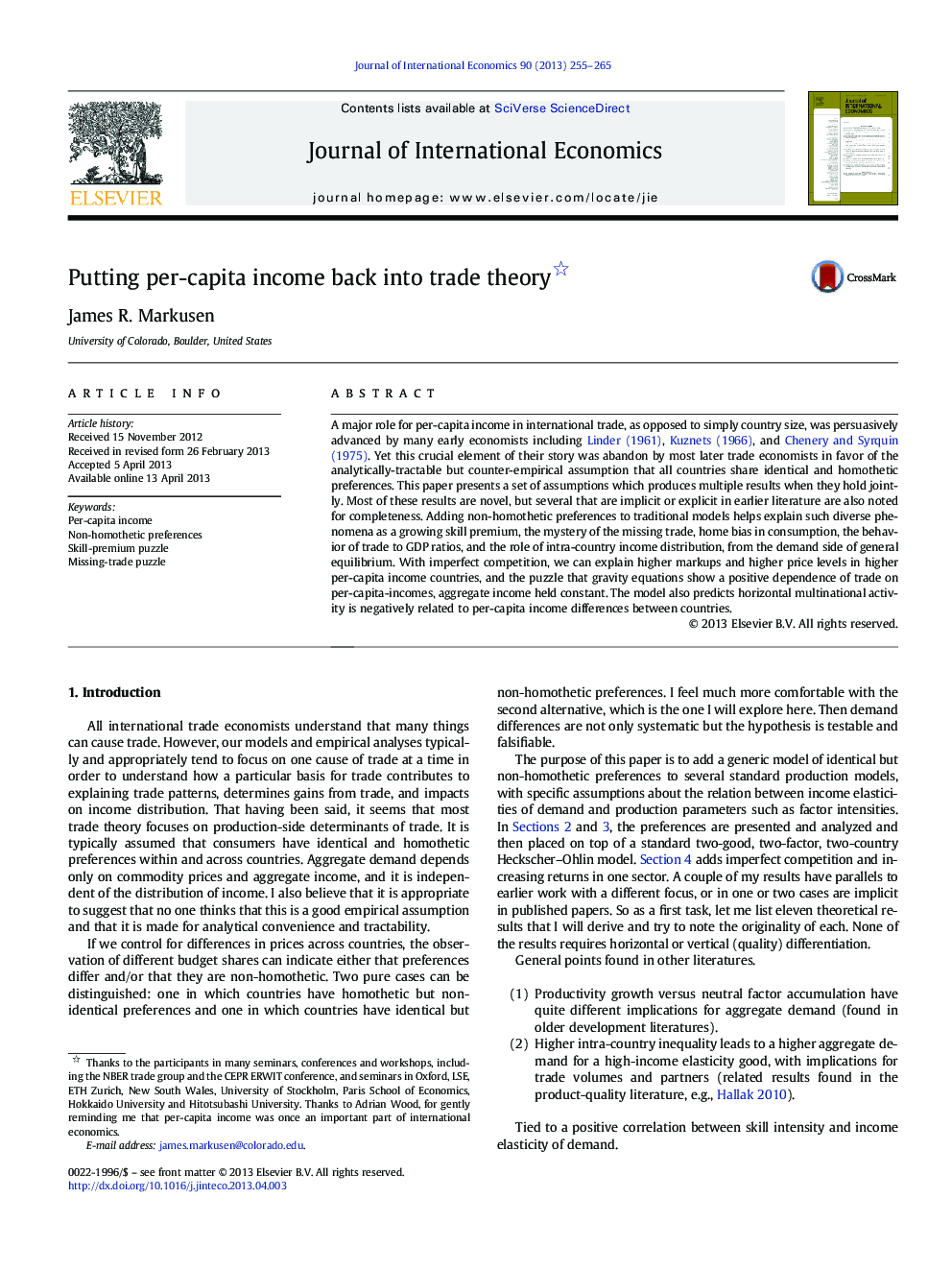| کد مقاله | کد نشریه | سال انتشار | مقاله انگلیسی | نسخه تمام متن |
|---|---|---|---|---|
| 962562 | 1479087 | 2013 | 11 صفحه PDF | دانلود رایگان |
عنوان انگلیسی مقاله ISI
Putting per-capita income back into trade theory
دانلود مقاله + سفارش ترجمه
دانلود مقاله ISI انگلیسی
رایگان برای ایرانیان
کلمات کلیدی
موضوعات مرتبط
علوم انسانی و اجتماعی
اقتصاد، اقتصادسنجی و امور مالی
اقتصاد و اقتصادسنجی
پیش نمایش صفحه اول مقاله

چکیده انگلیسی
A major role for per-capita income in international trade, as opposed to simply country size, was persuasively advanced by many early economists including Linder (1961), Kuznets (1966), and Chenery and Syrquin (1975). Yet this crucial element of their story was abandon by most later trade economists in favor of the analytically-tractable but counter-empirical assumption that all countries share identical and homothetic preferences. This paper presents a set of assumptions which produces multiple results when they hold jointly. Most of these results are novel, but several that are implicit or explicit in earlier literature are also noted for completeness. Adding non-homothetic preferences to traditional models helps explain such diverse phenomena as a growing skill premium, the mystery of the missing trade, home bias in consumption, the behavior of trade to GDP ratios, and the role of intra-country income distribution, from the demand side of general equilibrium. With imperfect competition, we can explain higher markups and higher price levels in higher per-capita income countries, and the puzzle that gravity equations show a positive dependence of trade on per-capita-incomes, aggregate income held constant. The model also predicts horizontal multinational activity is negatively related to per-capita income differences between countries.
ناشر
Database: Elsevier - ScienceDirect (ساینس دایرکت)
Journal: Journal of International Economics - Volume 90, Issue 2, July 2013, Pages 255-265
Journal: Journal of International Economics - Volume 90, Issue 2, July 2013, Pages 255-265
نویسندگان
James R. Markusen,